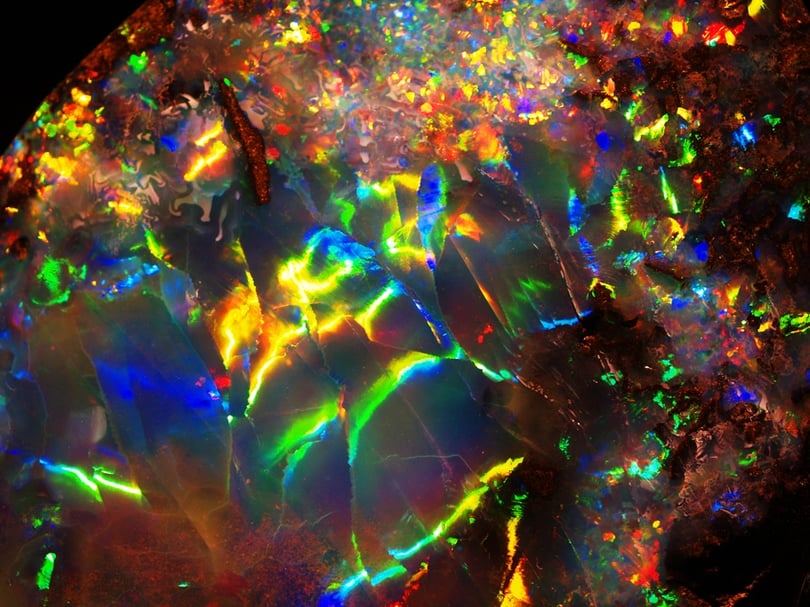
Opal and tourmaline are October's birthstones. Opal, fiery and dynamic, is worth its own spotlight.
Opal's signature myriad of colors are formed from seasonal rains that drenched dry ground in drier regions such as Australia’s “outback.” The rain soaks deep into ancient underground rock, carrying dissolved silica downward.
During dry periods, water evaporates, leaving solid deposits of silica in the cracks and between the layers of underground sedimentary rock. The silica deposits form opal.
The two broad classes of opal are precious and common. Precious opal displays play-of-color, common opal does not.

Here are the five main types of opal:
- White or light opal: Translucent to semitranslucent, with play-of-color against a white or light gray background color, called bodycolor.
- Black opal: Translucent to opaque, with play-of-color against a black or other dark background.
- Fire opal: Transparent to translucent, with brown, yellow, orange, or red bodycolor. This material—which often doesn’t show play-of-color—is also known as “Mexican opal.”
- Boulder opal: Translucent to opaque, with play-of-color against a light to dark background. Fragments of the surrounding rock, called matrix, become part of the finished gem.
- Crystal or water opal: Transparent to semitransparent, with a clear background. This type shows exceptional play-of-color.
Connect with GemFind on these Social Networks:
GemFind on Facebook . GemFind on Twitter . Gemfind on Pinterest . Gemfind on Google+